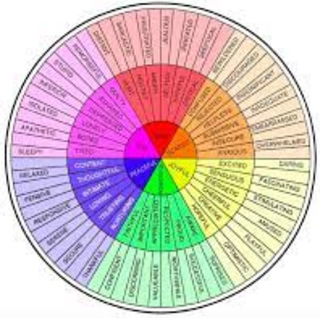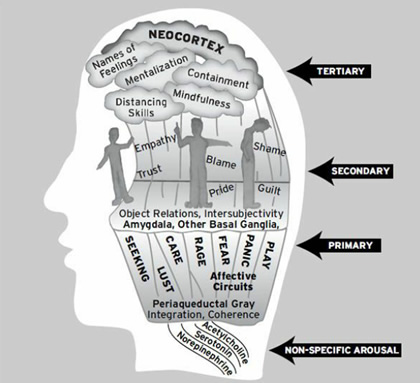Tamie Pushlar - Therapy Blog
Let's Talk About Emotions!
posted by Tamie Pushlar at 2022-02-14 15:51:00
Emotions are vital and commanding in our lives; we are not able to exist and act without them. What I have discovered, personally and professionally, is a fair amount of us are not fluent in our emotions. We go to school and learn to read, write, arithmetic, history, and science. We do not have a class to learn about emotions, why emotions exist, and how we take care of these emotions. Instead, we are taught indirectly or in some cases directly, that emotions are not always wanted.
A direct example:
When you are a child you start to cry over a toy that broke.
You may have heard the response: "Don't feel sad, it will be okay."
An Indirect example:
You are angry and frustrated regarding a misunderstanding with a classmate, Sally. Sally does not respond to your frustrations and she ignores you. You become angrier and you start yelling at her.
The teacher may say, "Look at how well-behaved Sally is."
These messages are replicated multiple times and what may occur is:
Dissociation: When you dissociate you become numb to your emotions because you are not present. You may not recognize that you have any feelings.
Emotional Addiction: You are more comfortable feeling the emotions intensely so when things are stable and calm it becomes uncomfortable. Your brain releases a chemical reaction during intense emotions; this chemical reaction can become addicting.
The Inauthenticity of Emotions: Your emotions and reactions are driven by the perception of others. You feel a certain way because you feel that it is expected.
Emotion Wheel

I have a large poster of the emotion wheel in my office. My clients like to look at it, and they become fascinated by the number of possible emotions and how little they recognize their own emotions. When was the last time you took a moment out of your day to recognize, listen to and take care of your emotions? People will come to therapy because they are feeling anxious or depressed. They spend a portion of their day trying to suppress and not feel those emotions. The solution behaviors we may use to suppress the emotions may numb the emotions temporarily, but they remain. They may appear at some other inopportune time and are often directed towards a loved one, or if they continue to suppress emotions they become detached and dissociated.
My prescription is to notice their emotion, notice where they are experiencing the emotion in their body, notice any thoughts that are surfacing regarding that emotion. Emotions are data; they give us helpful information. If we ignore this information we may end up making a choice that may be detrimental to us or people who are close to us.
The Brain and Emotions

When humans are born, the most developed part of the brain is the brainstem, which is also called the "reptilian brain." The brainstem controls breathing, temperature regulation, and movement. After a baby is born the limbic system begins to rapidly develop. The limbic system maintains emotions and helps us develop attachments and relationships. The limbic system, specifically the amygdala, integrates emotions, emotional behavior, and motivation. The insula is the source of disgust; it keeps us from ingesting something poisonous. The periaqueductal gray, located in the brainstem, is where the primary process of emotions is developed. According to Neuroscientist Panksepp, humans are born with the following emotions, which are innate to all of us for survival.
Life Survival Emotions
- Rage: Fight response
- Fear: Flight response
- Panic: Sadness, grief, loss, and depression
Life-Enhancing Emotions
- Seeking: Connected to addiction, phobias, avoidance, motivation, invention, and pursuit of goals-in people with complex trauma this circuit was discouraged or punished (Panksepp considers it the mother of all circuits)
- Play: Promotes neuron growth, it helps us process just like when we use REM sleep (activates more of the brain than any other circuit)
- Lust: Yearnings, urges, and procreation
- Care: Love and nurturing
EMDR, among other therapies, believes healing starts from the brainstem and limbic system. Traditional talk therapies focus on healing in the cortex (the cortex is considered "the thinking" part of the brain). In an EMDR session, your therapist will focus on your body sensations and emotions that are felt.
Emotions & You Explained
We can operationally define any emotion just by using the dictionary definition. We internalize and externalize the emotions based on our relationship with each emotion. In the examples below you are seeing the differences in how an emotion can be perceived and expressed.
Individual "A":
- A has had a healthy emotional relationship with their parents. As a baby, they have learned to experience sadness when their mom leaves the room. They would express their sadness by crying until their mom appeared.
- As A became a child, they understood object permanence so their mom leaving the room would not make them sad. In childhood, A did experience the loss of their beloved goldfish. Their parents provided space for A to grieve and allowed A to have a goodbye ceremony. A and their parents talked about what happens to goldfish when they die and perhaps the parents bought an age-appropriate book about death and dying.
- As a teenager, A experienced their first romantic relationship. When A's partner broke up with them, A spent the day listening to sad music and drawing in their bedroom. A's parents provided them with appropriate space and validation to grieve A's break-up. A was able to reach out to friends to manage the emotions of the break-up.
- Later in life when A was an adult, they did not get hired for the job they wanted. A used their spouse and friends as support; they cried because it was a really good job opportunity and they allowed themselves time to be sad.
Individual "B":
- B's mom was not readily available during the first year of their life. They had multiple caregivers. When one of B's caregivers left the room they would cry and sometimes the caregiver would return to provide B comfort and sometimes B was left alone to cry. After a while, B stopped crying when someone left the room and instead distracted themselves with a toy.
- As a child, B lost a goldfish; they flushed it down the toilet and did not tell their mom until the next day. Later at school, B was angry at another kid who brought a photo of their goldfish to school. During recess, B decided to trip the kid. They were sent to the principal's office and their mom yelled at them.
- As a teenager, B was in a relationship and then they were ghosted by this person. B started to think something was wrong with them and spent the next week mainly in bed. They missed several days of school. Their parents took their phone away until they returned to school.
- As an adult, B did not get hired for a job they wanted. After B found out, they drove to the nearest bar and decided to get drunk. When they arrived home their spouse was angry at them for coming home drunk and missing dinner. They didn't care; they decided to go to bed and ignore everyone.
A and B were both experiencing panic/sadness but they internalized and expressed it differently based on their earlier life experiences. It appears that A experiences Panic/Sad close to what it was meant for which is grief. B experienced panic/sadness as shame, anger, and resentment.
In EMDR therapy, we explore how each emotion is perceived, internalized, and expressed. We recognize which body sensations are connected to the emotion and we develop resources to manage the emotions in a healthy way to increase adaptive information processing. If B was in therapy with an EMDR trained therapist, B would discuss that when they experience sadness it is strongly related to shame and resentment. The EMDR therapist would teach resources to manage the sadness and they would use BLS (bilateral stimulation) to install the resource and to enhance the adaptive information processing. When B and the EMDR therapist are ready, they would process memories connected to the sadness that evokes shame and resentment.
The EMDR therapist may use a resource called Resetting Affective Circuits, which was created by Sandra Paulsen and Katie O'Shea. The protocol is described in detail in:
The protocol helps the individual reset their emotions when the emotions are not working in the way they are intended to work for them. Paulsen and O'Shea use the metaphor, "resetting our emotions is similar to rebooting a computer when it is not working right".
For example, B will react to sadness with shame and resentment. People will respond to their shame and resentment instead of sadness. If B was able to express their sadness and grief to the adults, the adults who have an opportunity to provide them with the needed support.
As you can tell, emotions are more complicated than what is defined in Webster's Dictionary. Therapy can help you down the path of figuring out if your emotions are providing the data you need or are your emotions working against you.
Categories: General

